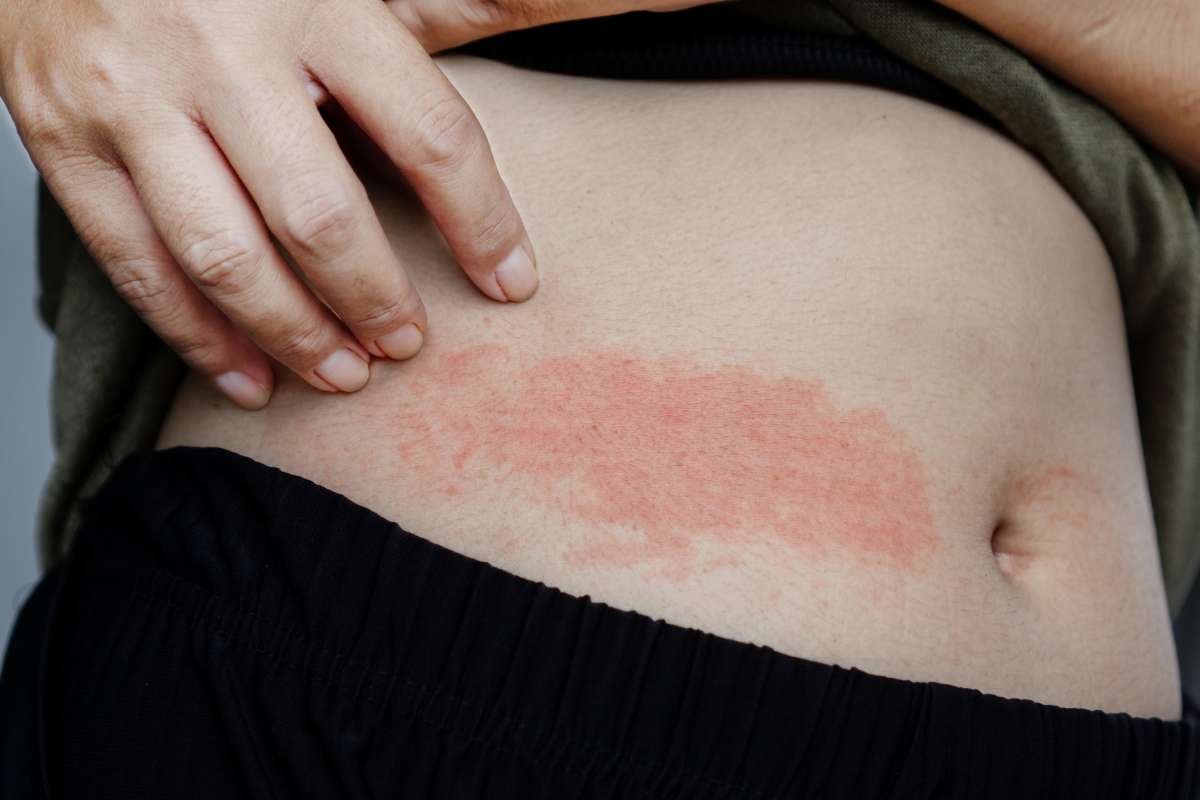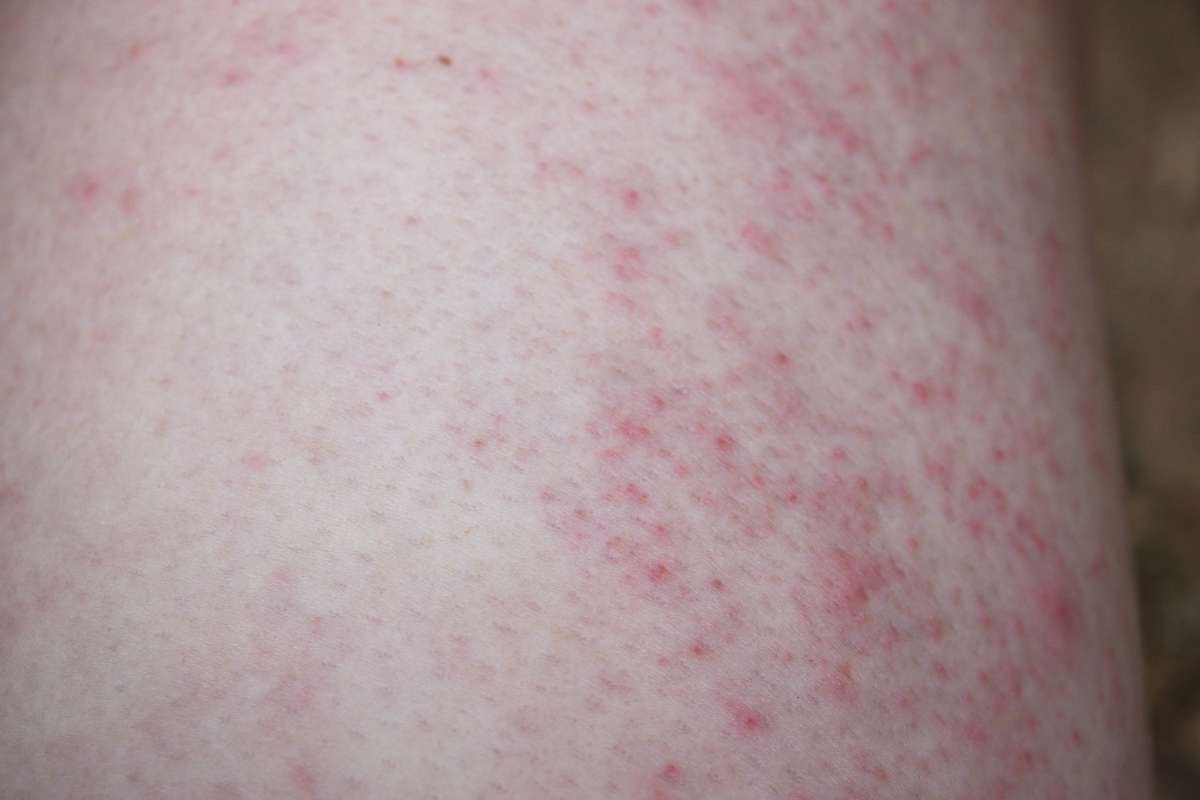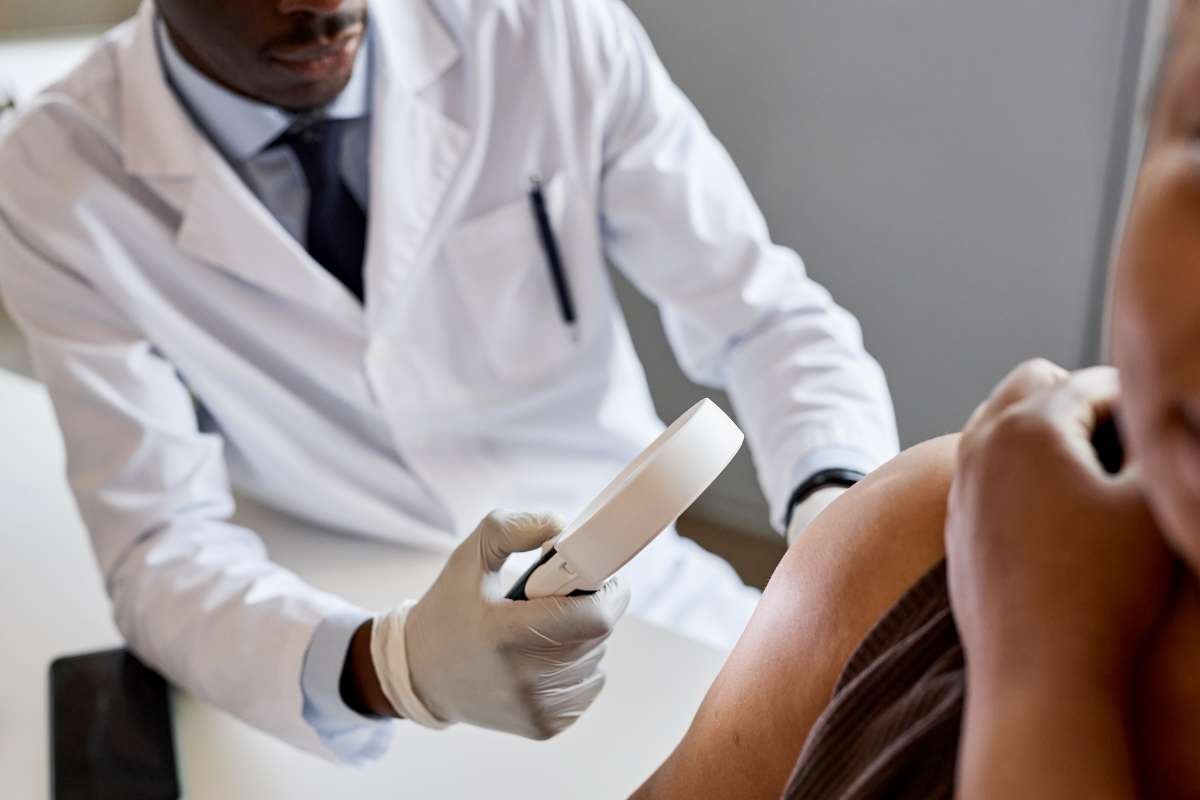
- Source: Image by shisuka
Ever had that moment when your skin starts itching during a serious meeting, and you’re trying to scratch like a ninja?
We’ve all been there. Skin rashes can turn a perfectly normal day into a battle of irritation and embarrassment. But here’s the fun part: your skin is not mad at you; it’s just trying to send a message. Maybe it hates that new soap you bought or the stress from your never-ending to-do list.
In a world where everyone wants glowing skin, dealing with skin rashes can feel like the universe is playing a prank. But relax, you’re not cursed. These red, itchy, bumpy guests show up for reasons we can actually fix. By the end of this read, you’ll know how to calm your skin, treat the causes, and even laugh at how you once panicked over a tiny red patch.
What Are Skin Rashes?
Skin Rashes are changes in skin color, texture, or appearance caused by inflammation or irritation. They might look red, dry, bumpy, scaly, or swollen. Some appear suddenly, while others grow over time. They can itch, burn, sting, or just look strange enough to make you Google symptoms at 2 a.m.
Rashes can appear anywhere, on your arms, face, legs, neck, or even scalp. Some vanish in a day; others stick around like unwanted guests. But the good news is that most skin rashes are not serious and can be treated with the right care.
Common Causes of Skin Rashes

- Allergic reactions: To soaps, perfumes, detergents, or even certain foods.
- Heat: Hot weather and sweat can trap moisture and cause prickly heat.
- Infections: Fungal, bacterial, or viral infections often show up as red patches.
- Stress: Emotional stress can trigger or worsen rashes.
- Medications: Some drugs can cause allergic skin responses.
- Autoimmune diseases: Conditions like lupus or eczema can lead to recurring rashes.
Your skin is your body’s alarm system. When something’s wrong inside or outside, it shows on the surface.
Types of Skin Rashes and How They Look
1. Eczema (Atopic Dermatitis)
- Causes dry, itchy skin that may crack or bleed.
- Common in children and people with allergies.
2. Contact Dermatitis
- Happens when your skin touches something irritating or allergenic.
- Redness, swelling, and blisters may appear within hours.
3. Hives (Urticaria)
- Raised, itchy welts caused by allergic reactions or stress.
- Usually disappear within a few hours or days.
4. Psoriasis
- A chronic condition where skin cells multiply too fast.
- Leads to thick, scaly patches that can itch or hurt.
5. Heat Rash (Prickly Heat)

- Caused by blocked sweat glands.
- Appear as small red bumps, often in hot and humid weather.
6. Ringworm (Fungal Infection)
- Red, circular patches with raised edges.
- Spreads easily through contact or shared items.
Each rash has its own story, but they all scream one message: “Take care of your skin!”
Facts About Skin Rashes
- More than 80% of people experience a skin rash at least once in their lives.
- Eczema affects over 31 million Americans, and the numbers keep growing.
- Heat rashes are more common in humid climates and can worsen with synthetic clothing.
- Stress-related rashes can appear even when you have no allergies or infections.
These facts remind us that rashes are not rare; they’re just your skin’s dramatic way of saying “help!”
How to Treat Skin Rashes Naturally
If your rash is mild, these home remedies can bring relief fast:
- Cool compress: Reduces itching and swelling.
- Oatmeal baths: Calm irritated skin.
- Aloe vera gel: Hydrates and heals redness.
- Coconut oil: Moisturizes and reduces dryness.
- Avoid scratching: It can worsen the rash and lead to infection.
Also, switch to mild, fragrance-free soaps and detergents, and wear loose cotton clothes.
If your skin rashes don’t fade within a week or keep spreading, it’s time to see a dermatologist. Some rashes need prescription creams or oral medication.
Medical Treatments for Skin Rashes

- Topical corticosteroids: Help with inflammation.
- Antihistamines: Relieve itching and allergic reactions.
- Antifungal or antibacterial creams: Target infections.
- Moisturizers: Rebuild the skin barrier and prevent dryness.
Your doctor might also suggest blood tests or patch tests to identify specific triggers. Always follow professional advice before starting a new treatment.
Preventing Future Skin Rashes
Prevention is better than scratching. Keep these simple habits:
- Use gentle skincare products.
- Stay hydrated and eat healthy foods.
- Keep your skin clean and dry.
- Manage stress through yoga or exercise.
- Avoid harsh detergents and tight clothes.
Your skin is loyal, treat it well, and it’ll glow instead of rebel.
When to Worry
Seek medical help if you notice:
- Rash spreads quickly or becomes painful.
- Fever or joint pain appears.
- Rash looks infected (yellow crusts, pus, or swelling).
- You have difficulty breathing or swelling in the throat.
These could signal serious allergic reactions or infections that need immediate attention.
Conclusion
So next time a rash shows up uninvited, don’t panic or grab the nearest lotion like a hero in distress. Instead, think of it as your skin’s way of sending a memo, “Hey, something’s off.” With the right care, patience, and humor, you can calm even the angriest skin rashes.
Your skin protects you every day, so treat it with love, not harsh chemicals. Be gentle, be patient, and most importantly, don’t let a little itch ruin your shine. After all, clear skin may glow, but confident skin, rash or not, truly shines brighter.